Two splendid historic houses for sale
These two properties have wonderful, rich histories
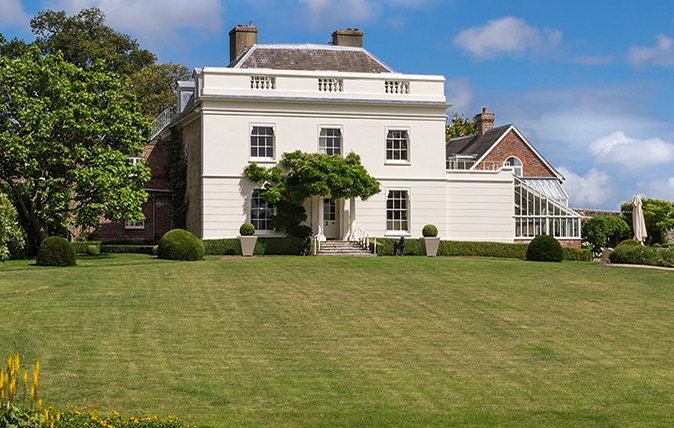

Buyers who have been sitting on the fence waiting for the perfect country house to come along may find the impetus they need in this week’s Country Life, which sees the launch onto the market of two exceptional edge-ofvillage houses, both set in enviable locations within an hour’s commute of London and recently refurbished to standards that reflect their exclusive Grade II* listing.
For sale through Savills (020–7409 8869) at a guide price of £3.5 million for the main house with six acres of beautifully landscaped gardens—or £6.95m to include the adjacent courtyard of restored farm buildings and four cottages—The Manor House at Buriton, near Petersfield, on the Hampshire/ Sussex border, was owned for much of the 18th century by three generations of the Gibbon family.
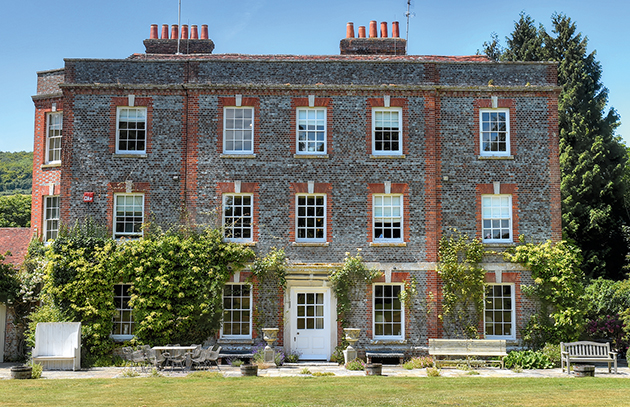
According to Arthur Oswald’s article in Country Life (November 12, 1948), the manor and borough of Petersfield were bought, in about 1719, by Edward Gibbon, a wealthy London draper who made a fortune as an army contractor supplying clothing for King William’s troops in Flanders and later became a director of the South Sea Company.
When that bubble burst, he was allowed to retain a tenth of his estimated £100,000 fortune and went on to make a second fortune ‘not much inferior to the first’. By the time of his death in 1736, Gibbon had acquired extensive estates in Hampshire, Sussex and Buckinghamshire, as well as a large house in Putney, where, a year later, his grandson, the historian Edward Gibbon and author of The Decline and Fall of the Roman Empire, was born. In his autobiography, the historian describes his father’s house at Buriton (‘where I have passed many light and some heavy hours’) as ‘an old mansion, in a state of decay, [which] had been converted into the fashion and convenience of a modern house’ set against the magnificent backdrop of the Downs and the long hanging woods which neither ‘art nor expense’ could possibly have improved.
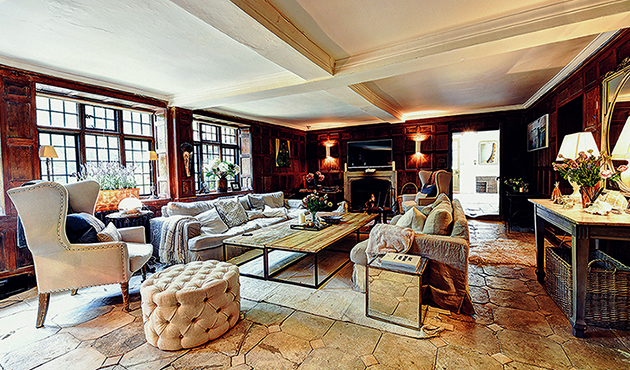
Whether the modernisation of the manor house was carried out by Gibbon’s grandfather or his father— who retired to live there permanently following his first wife’s death in 1747—is unclear, but, in any event, the resulting Georgian house, built around an earlier Tudor building, has remained largely unaltered since their day. In the Gibbon reconstruction, the east wing, incorporating a new brick wing built in about 1600, became the main block and the low range on the south side, incorporating part of ‘the old mansion’, was given its 18th-century facing and pair of brick porches.
The huge, 130ft-long tithe barn that dominates the farm courtyard is older, with brickwork dating from the 1500s.
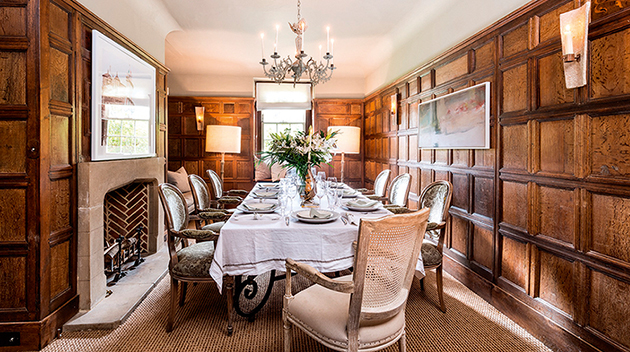
According to Oswald, the historian was a ‘townsman at heart’, who spent much of his time at Buriton browsing in his father’s library, although he sometimes accompanied his father on visits to ‘idle neighbours’, which he seldom enjoyed. He confessed to having lived ‘a studious, unsociable life in the country, never handling a gun, seldom riding a horse, and preferring a shady bench and a book in the garden’.
Sign up for the Country Life Newsletter
Exquisite houses, the beauty of Nature, and how to get the most from your life, straight to your inbox.
Following his father’s death in 1770, Gibbon found himself saddled with an estate much diminished by his father’s extravagant lifestyle, but he eventually found a buyer in Lord Stawell, who sold it in turn to Henry Bonham of Petersfield in 1798. In the absence of Bonham heirs, a cousin, John Carter, inherited an estate of several thousand acres around Buriton in 1826 and changed his name by royal licence to Bonham Carter.
His grandson, Lothian Bonham Carter, who inherited in 1905, was the first of the famously sporting family to live at Buriton, where he built a new family home in about 1910, as his wife apparently didn’t like living at the manor, which, in those days, was still a working farm.
When Lothian died in 1927, the Buriton estate passed to his son Algernon, although large tracts of downland were taken by the Forestry Commission to cover death duties. Col Bonham Carter, who played host to Country Life in 1928, loved the old manor house and spent much time and effort restoring and renovating it. The rest of the estate was sold on his death in 1957.
The current owner of the manor, who bought the house and farm courtyard in 2013, has thoroughly upgraded the entire property while respecting the integrity of the historic buildings. That said, the layout of the comfortable, 8,573sq ft main house has been tweaked in places to provide four main reception rooms, a family kitchen/breakfast room, a nursery, a reading room, a freezer room, a library/study, a splendid master suite, eight further bedrooms and seven bathrooms.
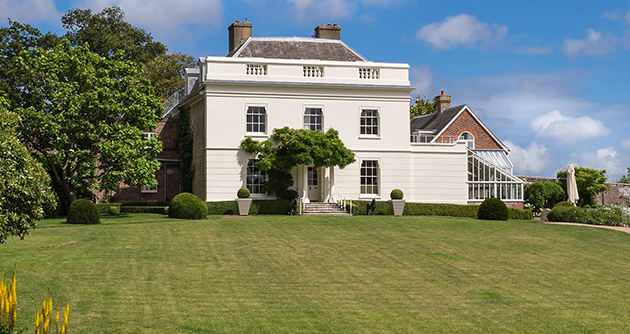
Confidently described by selling agent Tim Page-Ratcliff of Strutt & Parker (01273 475411) as ‘probably the finest village house in East Sussex’, illustrious, 18th-century Belmont House at East Hoathly, nine miles from the historic county town of Lewes, is a classic Georgian former rectory with later additions, set in some seven acres of glorious gardens and grounds.
The agents quote a guide price of £4.5m for the house, built in 1760, which, according to its English Heritage listing, has links to the 18th century diarist Thomas Turner. Over a period of some 20 years, the present owner has painstakingly restored, renovated and generally improved the house, gardens and outbuildings, which include a twobedroom coach house attached to the south side of the main building and a separate, two-bedroom gardener’s cottage.
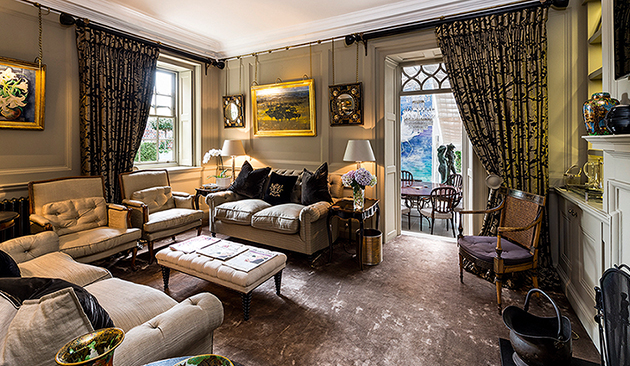
The interior of the main house, which has far-reaching views towards the South Downs, exudes a wonderful sense of light and space, thanks to a typically sensitive refurbishment by leading contemporary designer John Minshaw.
Belmont’s fine main reception rooms and conservatory are perfect for both formal and informal entertaining and are complemented on the first and second floors by a vast master suite with a balcony, six further bedrooms and three bathrooms. A secondary staircase leads to a separate one-bedroom apartment, ideal for staff.
Most of the principal rooms have lovely views of the gardens and grounds, which have been meticulously planned and beautifully landscaped and planted over the years. The planting scheme within the walled garden was designed by Anthony Paul Landscape Design.
-
 'Monolithic, multi-layered and quite, quite magnificent. This was love at first bite': Tom Parker Bowles on his lifelong love affair with lasagne
'Monolithic, multi-layered and quite, quite magnificent. This was love at first bite': Tom Parker Bowles on his lifelong love affair with lasagneAn upwardly mobile spaghetti Bolognese, lasagne al forno, with oozing béchamel and layered meaty magnificence, is a bona fide comfort classic, declares Tom Parker Bowles.
By Tom Parker Bowles Published
-
 Country houses, cream teas and Baywatch: Country Life Quiz of the Day, April 24, 2025
Country houses, cream teas and Baywatch: Country Life Quiz of the Day, April 24, 2025Thursday's Quiz of the Day asks exactly how popular Baywatch became.
By Toby Keel Published
